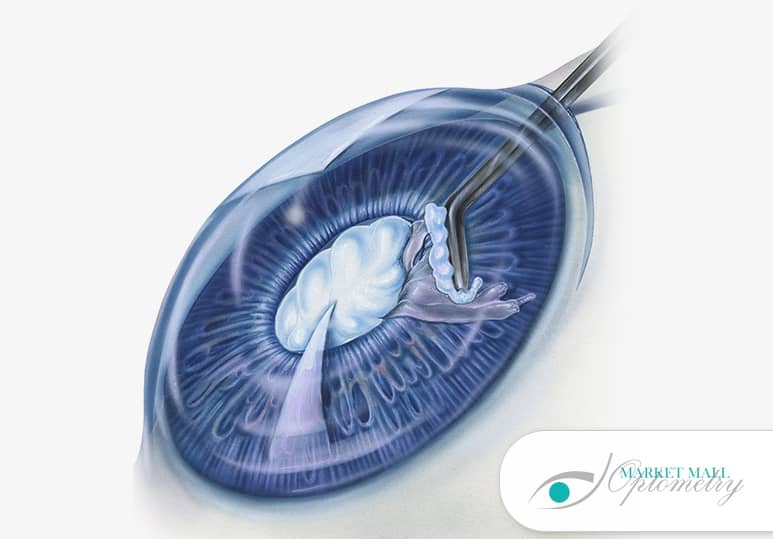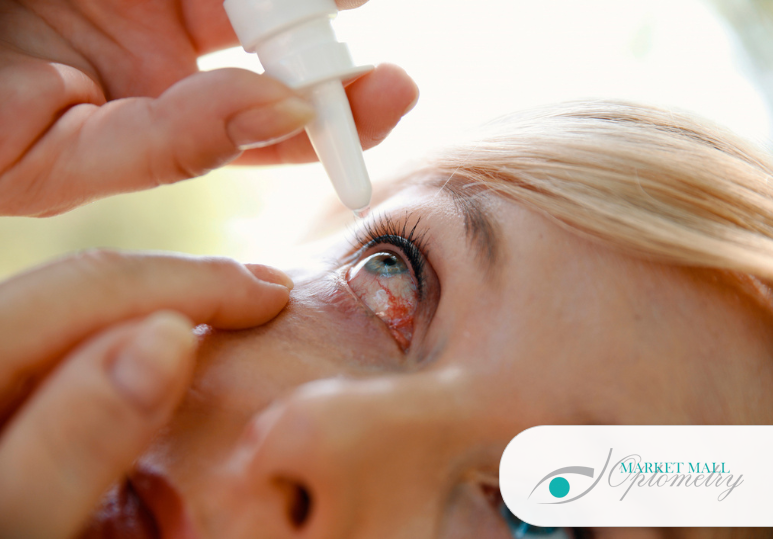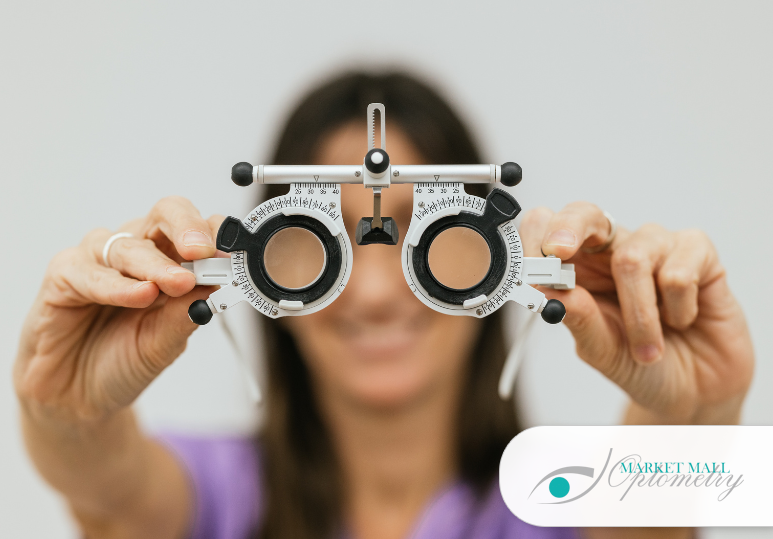Cataracts 101
Now that you know what cataracts are, here are some important details to help you understand the symptoms of cataracts and the steps you can take to avoid or manage them.
Symptoms Of Cataracts
Because cataracts develop slowly, you may not notice the development of your cataracts right away. Symptoms of cataracts include:
- Clouded vision
- Sensitivity to light
- Difficulty seeing at night or in low light
- Double vision
- Colours appear dull
- Changing prescription or the progression of nearsightedness
The Location Of Cataracts
Cataracts can develop in and affect different areas of the eye.
- Nuclear Cataracts. These affect the center of the lens. As this type of cataract develops, it will likely cause nearsightedness and the eye may begin to appear to have a yellow film that will eventually turn brown.
- Cortical Cataracts. This type of cataract develops around the edges of the lens. As it develops, you may see white streaks appearing in the eye and extending towards the center of the eye.
- Posterior Subcapsular Cataracts. This is when cataracts develop at the back of the lens. While this cataract often starts small, it is typically directly blocking the path of light the eye needs to create vision. Because of this and the fast rate at which this type of cataract develops, you should seek treatment before it severely limits vision.
Different Types Of Cataracts
- Age-related Cataracts. This is the most common type of cataract and it is brought on by aging.
- Congenital Cataracts. This form of eye condition refers to the development of cataracts in babies and children. Some babies can be born with cataracts while other young children can develop them. If the cataracts impact vision to the point where glasses will not adequately correct sight, cataract surgery may be required. If vision is not greatly impaired, cataracts can be left alone.
- Secondary Cataracts. This type of cataract is caused by another disease in the body, such as diabetes. The consistent use of steroids has also been linked to secondary cataracts.
- Traumatic Cataracts. Sometimes cataracts can develop after an eye injury is sustained. This type of cataract can develop soon after eye trauma but other times it can take years to develop.
Risk Factors
While the exact cause of age-related cataracts and congenital cataracts is not fully known, these are some common factors that put people at increased risk of developing cataracts:
- Smoking
- Diabetes
- UV exposure
- Diuretic use
- Steroid use
- Living in high altitudes
- Age (cataracts are most common in people over 40 years old)
Cataract Management In Calgary
There are many forms of cataract management that you can discuss with your Calgary optometrist. Cataract surgery is also a very common procedure that your optometrist can refer you for, depending on other health factors and eye conditions. One of the best ways to detect cataracts early and begin cataract management is having regular eye exams. At Market Mall Optometry in NW Calgary, our optometrists recommend a dilated eye exam at least once every two years so we can examine your lens for any signs of cataract formation. At Market Mall Optometry, our accredited optometrists are qualified to diagnose cataracts through a comprehensive medical eye examination and we can discuss your next steps in cataract management. To book a comprehensive eye exam complete with cataract detection, contact Market Mall Optometry at 1-403-286-4884 or fill out the contact form.
FAQ
Q: What are the risks of cataract surgery?
A: Although there are a few risks associated with cataract surgery, such as inflammation, swelling, bleeding, drooping eyelid, or a dislocation of the artificial lens post-surgery, most complications are mild. Cataract surgery is very common and often produces only desirable outcomes, but your optometrist will go over every possible scenario when you are discussing your cataract management with them.
Q: How can I prevent cataracts?
A: The key to cataract prevention is a healthy lifestyle; don’t smoke, eat well, manage other health issues, and visit Market Mall Optometry for regular eye exams to monitor your ocular health.
Q: Do cataracts spread from one eye to the other?
A: No, it does not. However, if you develop cataracts in one eye it is very common to develop it in the other one. But cataracts do not spread from eye to eye nor are they infectious or able to spread to anyone else.





